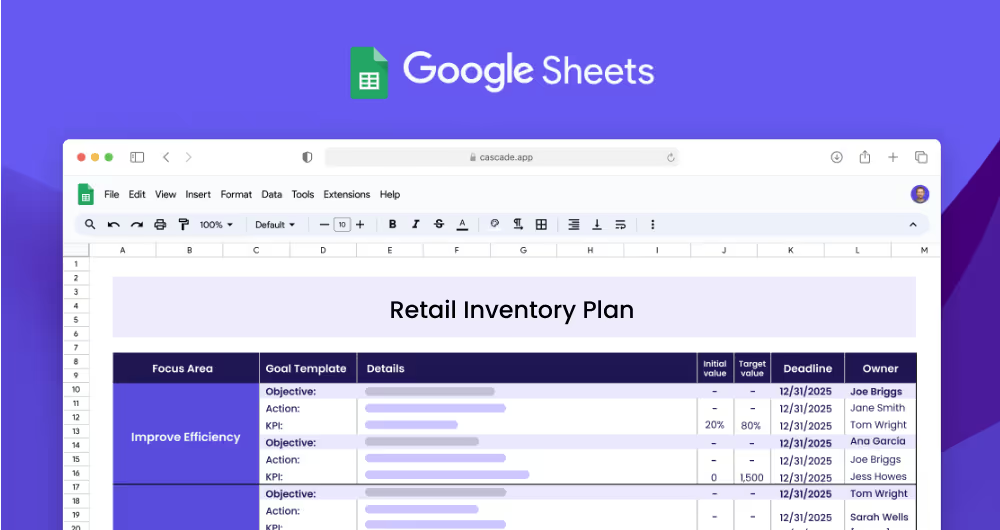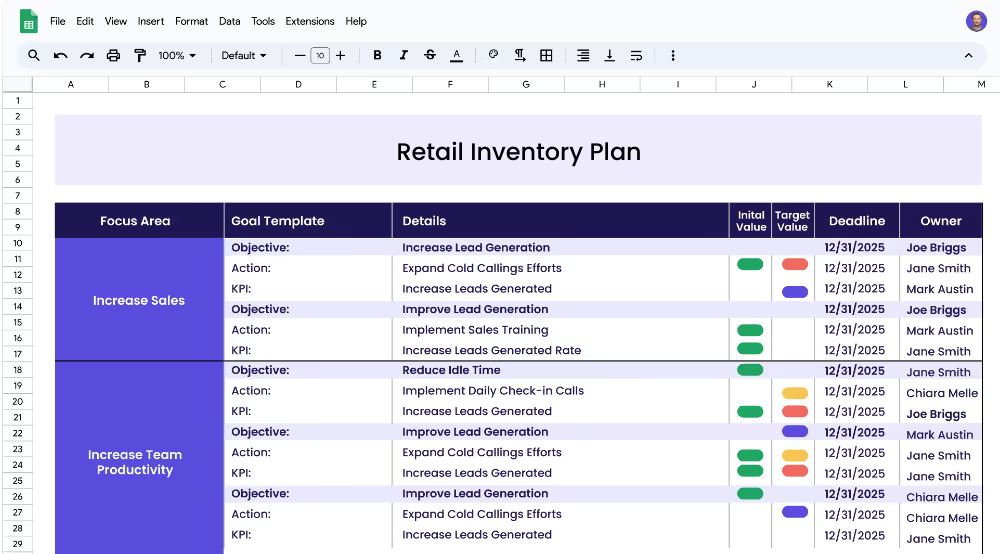A Retail Inventory Plan outlines a company's plan for tracking and managing their inventory. It is designed to optimize operations and increase efficiency by reducing stock-outs, increasing inventory accuracy, improving inventory visibility, and decreasing inventory wastage. This plan serves as a roadmap to guide retailers in achieving their desired inventory management and operations goals.
Each focus area has its own objectives, projects, and KPIs to ensure that the strategy is comprehensive and effective.
This Retail Inventory Plan template is designed for retail organizations and teams to plan and manage their inventory. It helps guide the team by providing a framework to identify and prioritize focus areas, set measurable objectives and KPIs, develop related action plans, and track progress and results. This template provides an efficient and effective way to improve inventory management and operations.
Focus areas are the broad topics that your inventory plan should cover. Examples of focus areas include optimizing inventory management, monitoring inventory levels, and reducing inventory wastage. Your plan should identify the focus areas that are most relevant to your business, and determine the objectives and projects that should be implemented to accomplish those goals.
Objectives should be specific, measurable, and achievable. They should be aligned with the focus area and should be realistic and attainable within the given timeframe. Examples of some objectives for the focus area of Optimize Inventory Management could be: Increase inventory accuracy, and Decrease stock-outs.
KPIs (Key Performance Indicators) are measurable targets that help track progress towards achieving the objectives. Examples of KPIs include increasing inventory accuracy, decreasing stock-outs, increasing inventory visibility, and improving inventory turnover. Each KPI should have an initial and target value, as well as the unit of measure (e.g. %, times/year).
An example of a KPI for the focus area of Optimize Inventory Management could be: Increase inventory accuracy from 80% to 95%.
Projects (or actions) are the activities that need to be completed in order to achieve the objectives and KPIs. For example, under the focus area of optimizing inventory management, one of the projects could be to implement an inventory tracking system.
If you’re ready to accelerate your strategy and see real progress, Cascade Strategy Execution Software provides an advanced platform over traditional spreadsheets. With Cascade, everything from planning to execution is centralized and streamlined, offering real-time updates, enhanced visibility, and efficient collaboration. Unlike static spreadsheets that can complicate or slow down your strategic growth, Cascade equips you with dynamic tools to achieve thorough and agile strategic execution. Sign-up for free or book a demo today to transform how your organization handles strategy.


